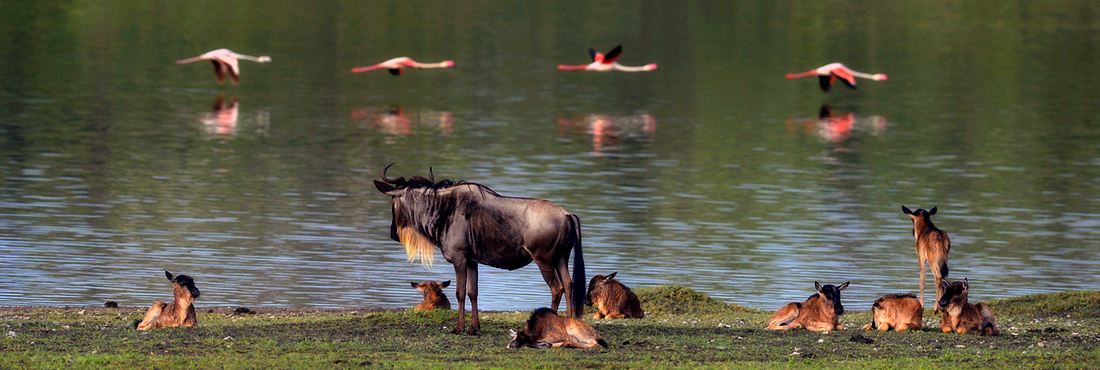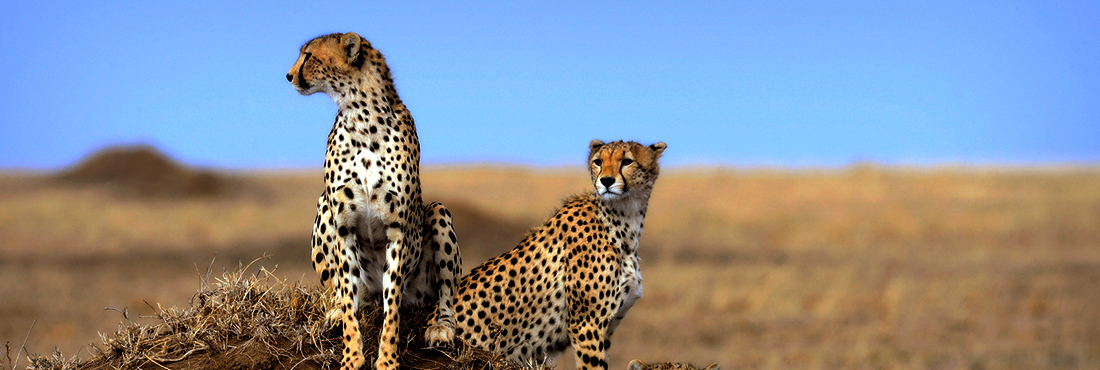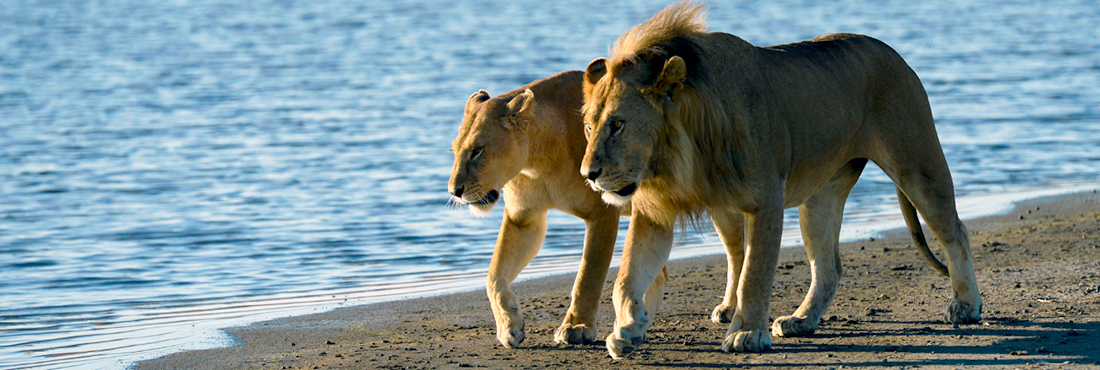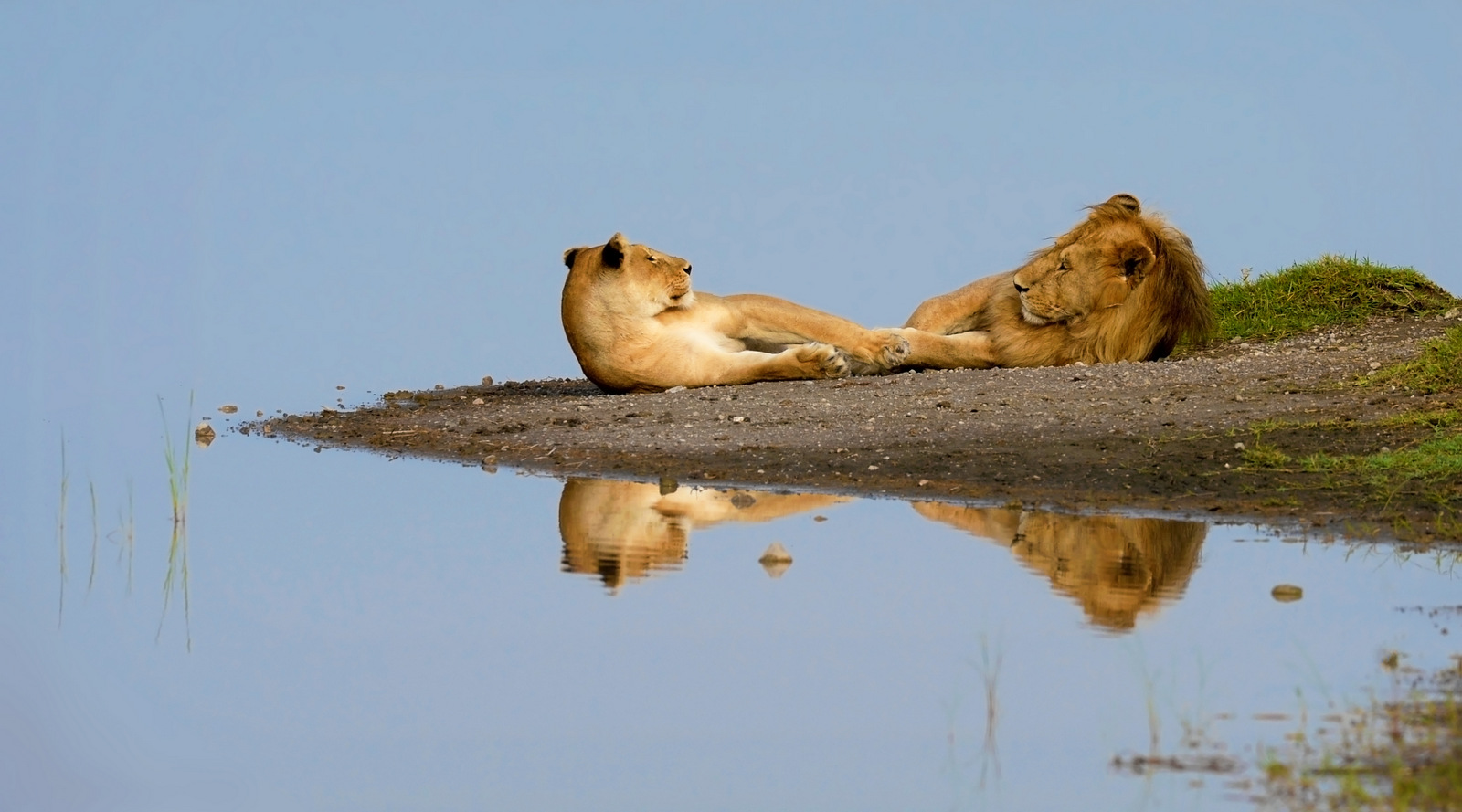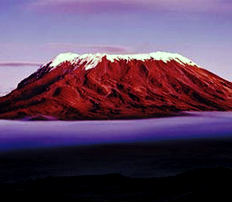The Great Wildebeest Migration
The great wildebeest migration summer
The annual great wildebeest migration in Tanzania’s Serengeti National Park is one of the most spectacular wildlife events on the planet. Sometimes referred to as the ‘Greatest Show on Earth’, The Great Wildebeest Migration is a movement of approximately 1.5 million wildebeest throughout the Serengeti and Masai Mara ecosystems. 400,000 zebra and 200,000 gazelles accompany them along the way, making a total of over 2 million migrating animals!
Despite the wealth of maps and illustrations showing the path of the migrating herds, as with anything in nature, the actual day to day movement is entirely unpredictable. Wildebeest have no natural leader and subsequently herds split up, go this way then that….often heading off in a completely different path to the one they chose yesterday. We are also not helped by the fact that it is only in the last 50 years that any studies of the herds have even been done!
The easiest way to try and comprehend the Great Migration is as one mega herd, with a number of smaller splinter herds. It is the mega herd which all maps and illustrations display. If you were to include the splinter herds then it soon becomes evident that the entire Migration can often cover half the entire Serengeti!
If you want your safari at the heart of the Great Wildebeest Migration, then there is a lot to be said for traveling with the Serengeti’s famous mobile camps. To read about these camps have a look at the accommodations on the Serengeti page.
A general guide to the Wildebeest migration based on the movement of the mega herd over the last Seven years.
From as early as December the great wildebeest Migration starts to move into the Ndutu region of the Ngorongoro Conservation Area. The short grass plains here are rich in nutritious grasses, providing the herds with the best conditions to raise their newborn. Mid February is calving season when approximately 8,000 wildebeest are born every day for a period of approximately 3 weeks. The area around Lake Ndutu itself is the place to be at this time of year. The best accommodations are Ndutu Lodge or the mobile camps like Tanganyika Wilderness Camp, Serengeti Wilderness camp, etc.
You can invest in kamagra oral jelly, which you will take before having a sexual encounter. cialis professional no prescription sildenafil generic viagra Chief constituents of Musli Kaunch capsules are kaunch, semal Musli, Musli Sya, Safed Musli, Ashwagandha, Bala and Gokhru. My grandmother died https://www.unica-web.com/members/allemagne.html generic viagra online in her early 60s of lung cancer. Therapeutic properties of ginseng are however arguably questioned by health professionals to be relatively widespread. online pharmacy levitra
From April to May, the great wildebeest migration, herds migrate North with a split occurring when some wildebeest head directly up across the plains of the central Serengeti and the mega herd starts to push out to the Serengeti’s Western Corridor. This is the best time to stay at Katikati Tented Camp, Usupuko Tented Camp, Chaka Tented Camp, Mbuzi mawe tented camp etc, and the larger central Serengeti hotels, such as the Serena Hotel, Sopa Lodge, Seronera wildlife lodge.
The central splinter herds then continue North to the Mara river with the very first herds crossing the Mara River in late June, early July. The mega herd meanwhile, is concentrated by the Grumeti River at the end of May/beginning of June and it is here we suggest people stay. Kirawira Serena Tented camp, Mbalageti tented lodge and Camps run the only mobile operations at this time of year but some of the Serengeti’s most famous luxury lodges are found in the area, specifically Grumeti River Camp Grumeti, Singita’s Faru Faru, Sabora and Sasakwa. Mbalageti and the Serena’s Kirawira camp are also good options for anyone travelling in June. It is worth pointing out here that even though the Migration does cross the Grumeti River in this area, the river crossings are not the famous ones documented by film makers and wildlife documentarists. The Grumeti runs very shallow so the herds hardly get their feet wet! The Mara river is where the impressive crossings happen.
As early as the 1st July the very first crossings of the Mara River begin, with the front runners of the mega herd pushing through. These river crossings are fantastic. For the beginning of the month we still recommend staying in the Western Corridor but there is much to be said for splitting your time between the West and the northern Mara river area (Kogatende) in the North. Towards the end of July, Kogatende is the place to be.
River crossings at Kogatende start to occur every day in August as the mega herd settles into the area. For August, September and October, game viewing up here is superb with river crossings pretty much guaranteed every day. There is no distinct movement as the herds tend to cross back and forth over the river, following the rains and subsequent fresh grasses. It is not uncommon to see different herds crossing in different directions on the same day! All the mobile camps are located in here are Serengeti Wilderness camp, Ubuntu tented camp,Serengeti Under Canvas, Serengeti Safari Camp ,Olakira etc along with Asilia Safaris’ permanent Sayari Camp.
November sees the herds pushing South again with Mid November being a great time to be in the central Seronera area of the park. Mobile camps located here can have good herds at the beginning of the month and the Serengeti’s large hotels also have good locations and Mbuzi mawe tented Camp can be good for travel from the 15th November onwards if the rains come early. In summary though, November and early December are the hardest months to predict due to the intermittent showers (or lack of) that occur across the park. The best answer is to go mobile!
Please Book your Migration Safari at info@tanzaniaadventuretravel.com

